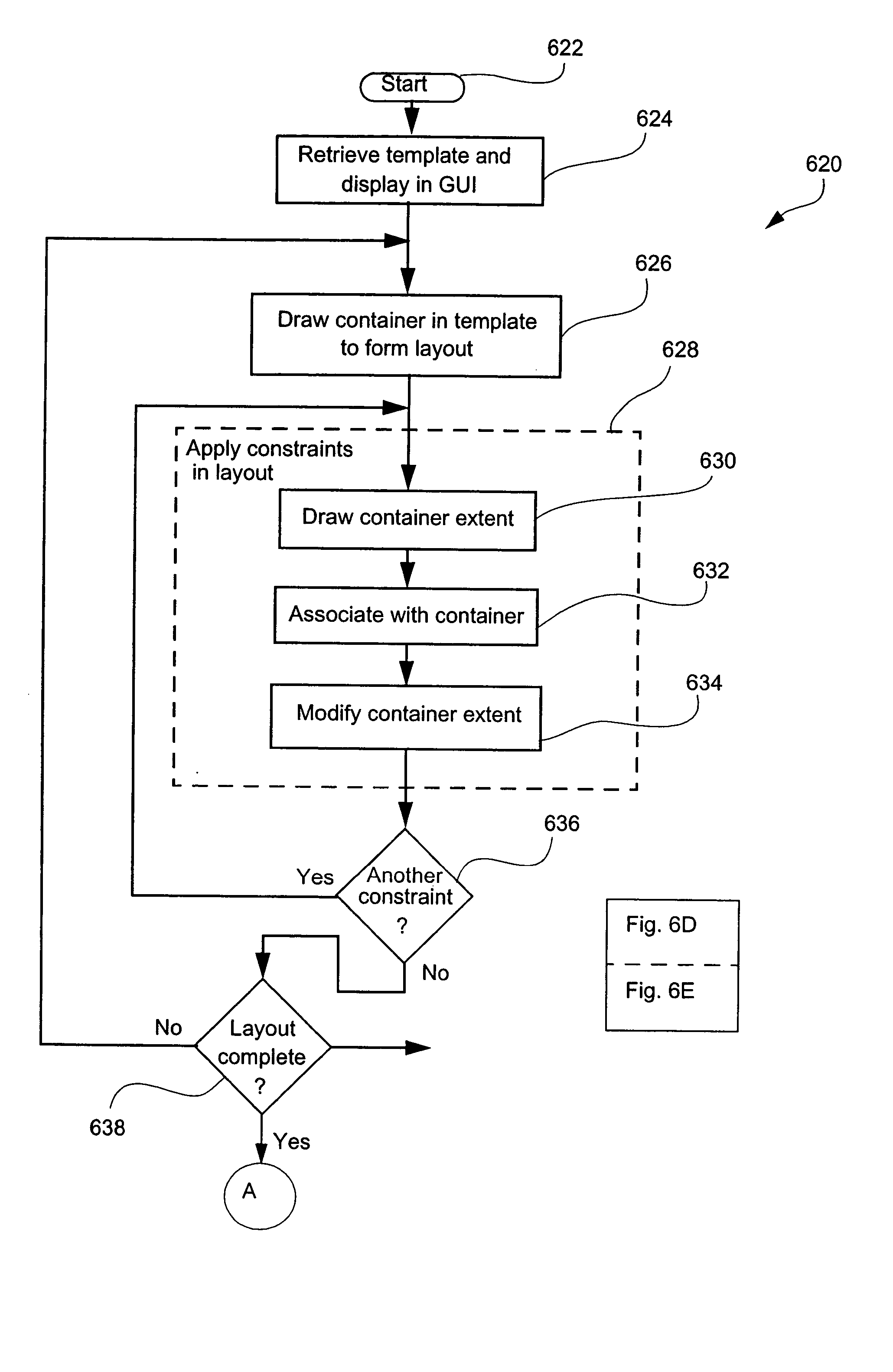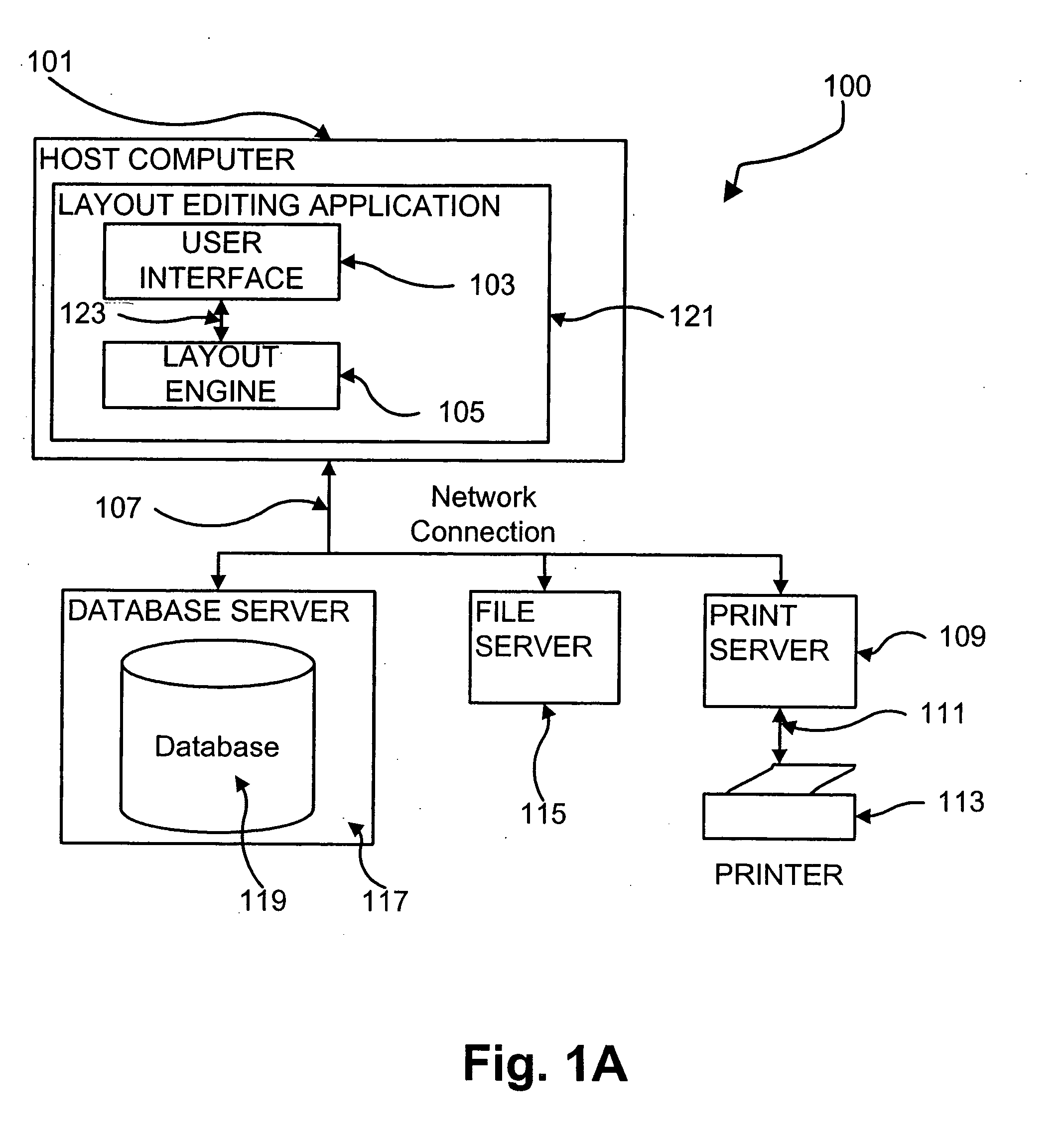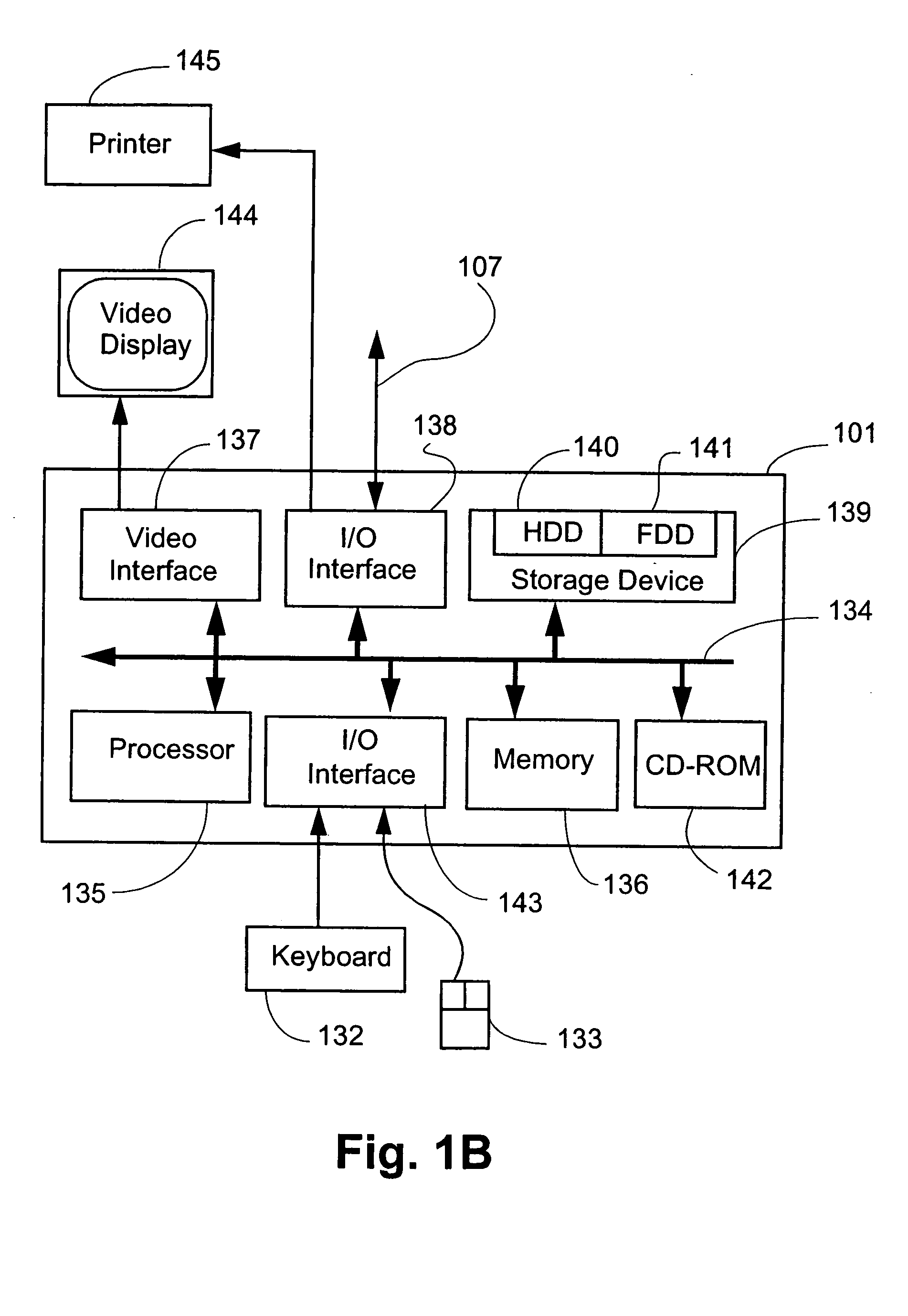Document layout method
a document layout and document technology, applied in the direction of visual presentation using printers, digital output to print units, instruments, etc., can solve the problems of poor quality, high cost of customizing documents, and poor quality of digital processes
- Summary
- Abstract
- Description
- Claims
- Application Information
AI Technical Summary
Benefits of technology
Problems solved by technology
Method used
Image
Examples
Embodiment Construction
1. Overview
[0079] A variable data document creation and printing system is disclosed which is preferably implemented as a software application. The application allows a plurality of documents to be created that have a similar form yet whose contents may differ. This is achieved by the creation and editing of a document template, and the association of areas on the document template with various data.
[0080] A document template may contain a plurality of containers, each of which is configured to hold content, such as text or image data. Containers can be fixed in position and size, or may vary in dimensions or position from document to document in accordance with user specified rules. The content of these containers can be static or variable (ie. dependent on some data source, such as a database).
[0081] Users may specify various types of data sources from which to obtain data. A data source contains a plurality of data records. The application provides a mechanism for associating...
PUM
 Login to View More
Login to View More Abstract
Description
Claims
Application Information
 Login to View More
Login to View More - R&D
- Intellectual Property
- Life Sciences
- Materials
- Tech Scout
- Unparalleled Data Quality
- Higher Quality Content
- 60% Fewer Hallucinations
Browse by: Latest US Patents, China's latest patents, Technical Efficacy Thesaurus, Application Domain, Technology Topic, Popular Technical Reports.
© 2025 PatSnap. All rights reserved.Legal|Privacy policy|Modern Slavery Act Transparency Statement|Sitemap|About US| Contact US: help@patsnap.com



